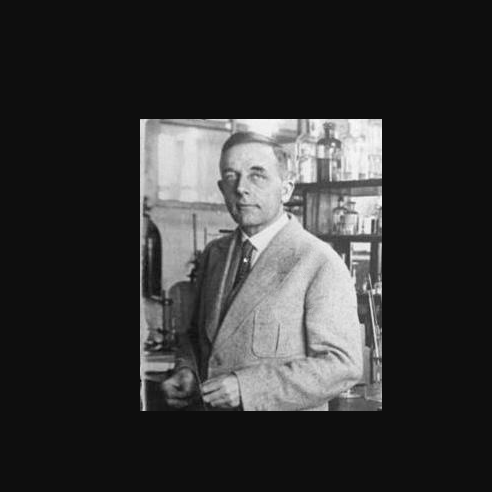Understanding the Warburg Effect: Insights for Cancer Research
Written on
Chapter 1: The Warburg Effect Explained
The Warburg Effect is a significant metabolic phenomenon that has profound implications for cancer research. Some scientists and clinicians remain skeptical about this effect, labeling it as controversial, despite its critical insights into cancer biology. My research journey has led me to clarify this concept in straightforward terms.

Photo by Mikhail Nilov from Pexels
The loss of friends, family, and colleagues to cancer has deeply affected me, fueling my desire to share knowledge about this disease. Unlike some who may avoid the topic, I believe in the importance of discussing cancer openly and scientifically. I aspire to make my retirement years meaningful. In a prior piece, I outlined breakthroughs in cancer treatment involving hybrid nanotubes. I am hopeful that we will eventually conquer this formidable disease.
However, I share this with both optimism and caution, as my previous article—which reflects over fifty years of research—received limited exposure on Medium, primarily accessed through direct links. Similarly, groundbreaking research from Japan has been overlooked by mainstream media, raising questions about public access to vital scientific knowledge.
The algorithms on platforms like Medium may have misclassified my cancer-related articles as controversial, despite their foundation in credible science, edited by experts. This situation is concerning, as cancer remains a significant societal challenge, and we need to foster healthy dialogue and knowledge sharing.
It is important to clarify that ketosis and related topics are no longer controversial. Respected scientists are actively investigating their benefits for both physical and mental health, with numerous clinical trials underway. I am passionate about this subject because it represents a pivotal theory that deserves thorough investigation with an open mind.
In this article, I aim to demystify the Warburg Effect by explaining its mechanisms and implications, encouraging readers, especially those with scientific backgrounds, to engage with this topic openly. By cultivating curiosity and promoting the exploration of novel ideas, we can enhance our understanding rather than hinder it with unfounded labels.
You may be curious about the brilliant mind behind this effect: the remarkable Dr. Otto Heinrich Warburg.

Image Wiki Commons
Dr. Warburg, born on October 8, 1883, in Freiburg, Baden, was a trailblazer in cancer research. He obtained his Doctor of Chemistry in 1906 and Doctor of Medicine in 1911, serving in World War I. Later, he became a professor at the Kaiser Wilhelm Institute for Biology, where he focused on cellular metabolism.
His groundbreaking work on respiratory enzymes earned him the Nobel Prize in 1931. Dr. Warburg discovered that cancer cells can thrive and multiply even in low-oxygen conditions, a phenomenon now known as the Warburg Effect, which I will elaborate on in this article. This revelation has opened new pathways for understanding cancer metabolism.
Dr. Warburg authored significant works, including "Stoffwechsel der Tumoren" (1926) and "Entstehung der Krebszellen" (1955). His later studies delved into cancer chemotherapeutics and X-ray mechanisms. He received numerous accolades, including membership in the Royal Society and an honorary doctorate from Oxford University.
Chapter 2: The Warburg Effect's Role in Cancer
The Warburg Effect illustrates a unique metabolic reliance observed in cancer cells, where they primarily engage in glycolysis—a less efficient energy production method—despite the presence of oxygen. This is in stark contrast to healthy cells, which predominantly utilize oxidative phosphorylation for optimal energy production.
The Warburg Effect is not merely an academic curiosity; it is a crucial factor contributing to the aggressive growth and spread of cancer. By relying predominantly on glycolysis, cancer cells secure a survival advantage, leading to rapid proliferation and an acidic environment that facilitates invasion, as well as promoting angiogenesis to sustain their growth.
However, this metabolic dependency also presents a potential vulnerability that scientists are eager to target. By focusing on the enzymes and pathways involved in glycolysis, researchers aim to create innovative therapies that can effectively starve cancer cells of their energy supply.
Understanding the Warburg Effect has far-reaching implications, potentially leading to enhanced diagnostic tools and informing dietary strategies to slow cancer progression. Ongoing research continues to explore this phenomenon, and while many questions remain, the possibilities for cancer prevention and treatment are significant.
In a compelling study, Ozsvari et al. demonstrated that mitoketoscins, novel mitochondrial inhibitors targeting ketone metabolism, could impede cancer stem cell activity and dissemination. This raises the question: Could ketogenic diets or fasting be effective in blocking cancer stem cells? Addressing these inquiries is essential for developing new diet-based strategies to enhance cancer treatments by targeting metabolism.
The first video titled "Otto Warburg's Cancer Metabolism Theory with Sam Apple" delves into Warburg's groundbreaking theories on cancer metabolism, providing insights into how these concepts are being examined in today's research landscape.
Chapter 3: Key Mechanisms Behind the Warburg Effect
To summarize the key mechanisms of the Warburg Effect, consider the following:
Normally, cells produce energy via oxidative phosphorylation, yielding a substantial amount of ATP (36 molecules per glucose). In contrast, glycolysis generates only 2 ATP molecules per glucose. Yet, cancer cells often favor this seemingly less efficient pathway.
While cells naturally shift to glycolysis in low-oxygen settings, cancer cells can upregulate Hypoxia-Inducible Factor 1 (HIF-1) to drive this shift even when oxygen is available. Genetic mutations in tumor suppressor genes (such as TP53) and the activation of oncogenes (like MYC and RAS) further promote glycolysis, altering cellular signaling pathways.
Mutated TP53 loses its ability to regulate genes involved in cell cycle arrest and apoptosis, leading to unchecked cell division. Additionally, mutant TP53 can influence metabolic pathways to enhance glycolysis, thus meeting the energy demands of rapidly dividing cancer cells.
MYC, as an oncogene, amplifies the expression of glycolytic enzymes and glucose transporters, boosting glycolysis and promoting glucose utilization for biosynthetic processes essential for cell growth. RAS signaling activation further heightens glycolysis by increasing enzyme expression and glucose uptake.
These genetic changes enable cancer cells to maintain elevated rates of glycolysis, known as the Warburg Effect, supplying energy and metabolic intermediates crucial for growth and survival. This metabolic reprogramming is vital for providing building blocks necessary for rapid cell division, making excessive sugar consumption, particularly from refined carbohydrates, a significant concern.
The second video titled "Deciphering the Warburg Effect - How to Cure Cancer with Metabolic Therapy" explores potential metabolic therapy approaches to combat cancer, shedding light on how understanding the Warburg Effect can inform treatment strategies.
Chapter 4: The Ongoing Debate Surrounding the Warburg Effect
Despite its widespread observation in cancer cells, the Warburg Effect remains a topic of active debate within the scientific community. Key points fueling this discussion include:
The preference for glycolysis, a seemingly less efficient energy production pathway, challenges traditional views of cellular metabolism. Critics argue that the advantages of rapid ATP production and access to biosynthetic intermediates may not adequately compensate for the lower energy yield compared to oxidative phosphorylation.
Not all cancer types exhibit the Warburg Effect uniformly. Some tumors may rely more on oxidative phosphorylation, while others switch between metabolic states based on environmental conditions. This variability raises questions about the universality of the Warburg Effect as a hallmark of cancer.
The precise role of the Warburg Effect in cancer development remains uncertain. Is it a driving force behind tumorigenesis or merely a result of underlying genetic changes? This fundamental question carries significant implications for therapeutic strategies targeting cancer metabolism.
Cancer metabolism is a complex process influenced by various factors, including genetic mutations, the tumor microenvironment, and interactions with surrounding cells. This complexity complicates efforts to isolate the specific contributions of the Warburg Effect to cancer progression.
Despite these ongoing debates, the Warburg Effect remains a crucial area for exploration. Understanding its complexities could lead to deeper insights into cancer biology and possibly pave the way for innovative treatment approaches.
Conclusions and Future Directions
While the Warburg Effect is a captivating and potentially exploitable phenomenon, it poses a complex puzzle in cancer biology. Its role in tumor development and progression is not straightforward, yet its implications are promising, warranting an open-minded approach rather than outright dismissal.
Despite the controversies surrounding its efficiency and universality, the Warburg Effect offers valuable insights into the unique metabolic landscape of cancer cells. Researchers continue to explore innovative therapeutic strategies by targeting altered metabolic pathways to inhibit tumor growth and improve patient outcomes.
The distinct metabolic signature of cancer cells also holds potential for developing novel diagnostic tools for early disease detection and monitoring. Continued research into the Warburg Effect may uncover new strategies to combat cancer. By examining this metabolic enigma, we can identify innovative ways to exploit cancer’s vulnerabilities and develop targeted therapies that disrupt energy production and growth. This knowledge could revolutionize cancer treatment and enhance patient survival and quality of life.
Exploring the potential of caloric restriction, intermittent fasting, and ketogenic diets in cancer treatment is essential, as these approaches may deprive cancer cells of their energy sources without harming normal cells.
Preclinical and clinical studies have tested these strategies, yet further exploration is necessary to enhance their effectiveness against cancer. Understanding the dysfunctionality of cancer cell mitochondria and their role in cancer behavior is crucial.
Moreover, we must investigate any long-term adverse effects of ketogenic diets and their impact on rapidly dividing normal cells, such as lymphocytes and fibroblasts, which rely on aerobic glycolysis.
Thank you for engaging with my story. I wish you a long and healthy life.
If you write about health and science, I invite you to join my publication. Here is the link to the initial submission guidelines. You may also find my curation of stories from the Health & Science publication on Medium.com insightful.
I also curate stories from ILLUMINATION publications, featuring a diverse range of topics.
About Me
As a retired scientist in my mid-70s, my grandkids inspire me to contribute to this platform. I volunteer as an editor for Illumination publications, supporting emerging writers. I welcome the opportunity to read, publish, and promote your stories. Connect with me on LinkedIn, Twitter, and Quora, where I share articles I find interesting. Subscribe to my account to receive updates on my stories.